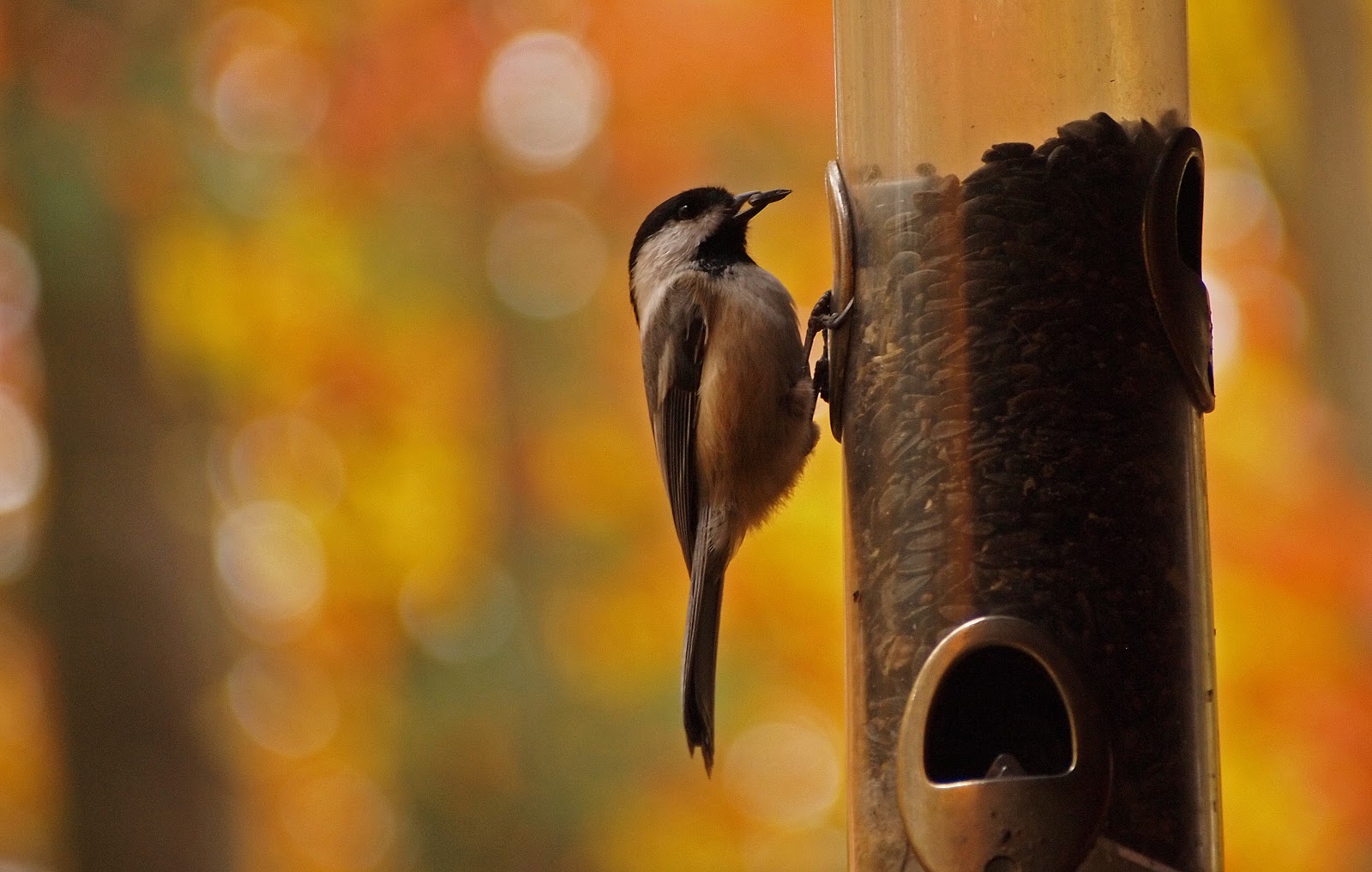I’m wrapping up the fourth week of a five week on-line course on avian behavior. For the past several weeks, I have studied territorial behavior among mallard and goldeneye ducks, the courtship/territorial relationships between male and female red-winged blackbirds and currently, the mating rituals of birds of paradise. What I have learned throughout the past several weeks is that I know so very little about birds and how they behave.
One of my difficulties came from being unable to identify a particular species of bird. For the longest time, I thought I had only chickadees and white-breasted nuthatches at my backyard feeders. From the observing techniques learned in week one and two, I realized that I actually had two species of nuthatches, the larger white-breasted nuthatch AND the smaller red-breasted nuthatch. I had not noticed the different color bands on the red-breasted nuthatch’s head nor the pale red chest feathers and summarily called all the small black and white birds, chickadees.
I was familiar with the term sexual dimorphism the scientific term for differences in size, structure and appearance between male and female birds of the same species; a common example being male mallard ducks with their bright green heads and the female mallards that are shades of brown. But what I hadn’t realized until this class is that some birds’ coloration and feather patterns change throughout their lives and in some instances seasonally change.
There are also examples of male birds that hide certain physical characteristics dependent upon the situation. During the mating season, the male red-winged blackbird will display their bright red/yellow wings as a sign of dominance alerting other males to stay out of his territory. However, once mating season has passed the males will gather in large flocks. To avoid fighting within these groups, the males will hide their dominant red/yellow feathers. Never knew that; I just thought there were a solid black colored blackbird and the red-winged variety.
What I have learned from this class will help me when I participate in Project FeederWatch that begins this coming Monday. A program of the Cornell University Lab of Ornithology, the FeederWatch information gathered by me and other volunteers will help bird researchers identify patterns of behavior and winter homes of North American birds. Up to now, all of my identification work has been confined to class videos where I can watch the videos over and over until I get the answers correct. On Monday, I will see how much I have learned.


No comments:
Post a Comment